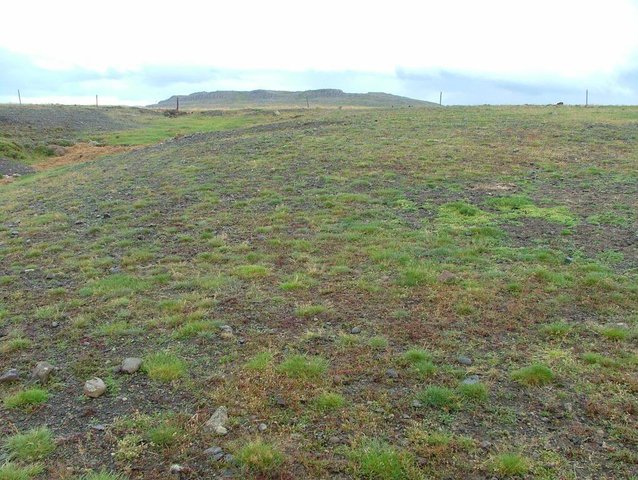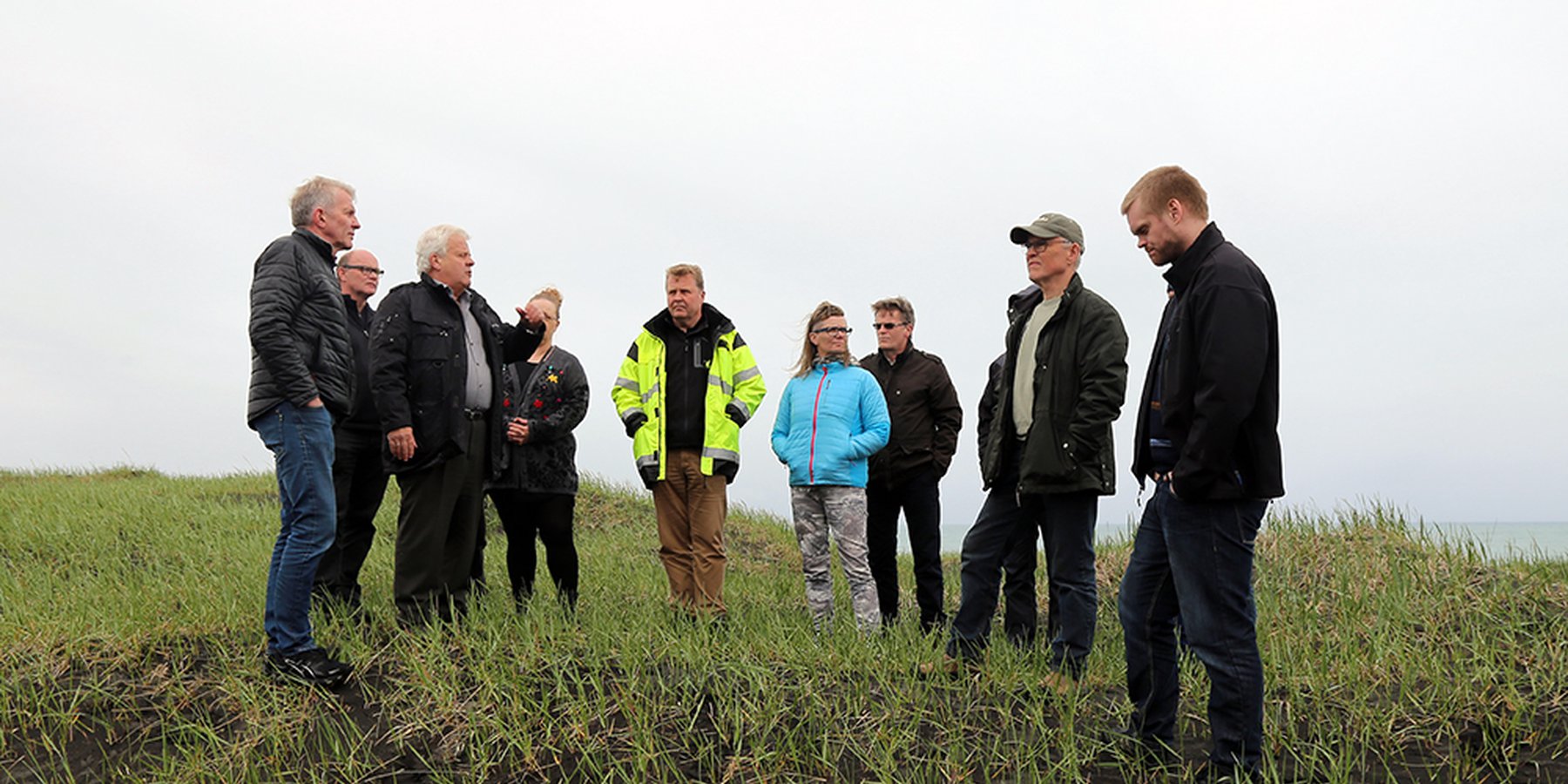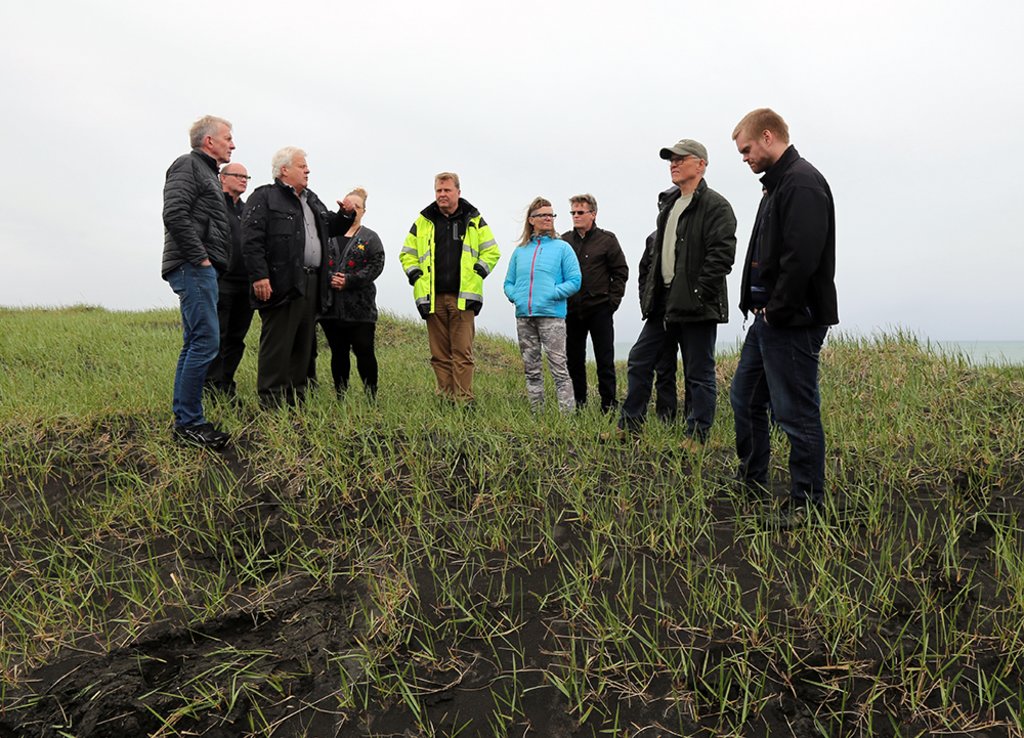Participatory cost-sharing restoration programme [Islande]
- Création :
- Mise à jour :
- Compilateur : Thorunn Petursdottir
- Rédacteur : –
- Examinateurs : Jan Reichert, Hanspeter Liniger
Farmers Heal the Land
approaches_2599 - Islande
Voir les sections
Développer tout Réduire tout1. Informations générales
1.2 Coordonnées des personnes-ressources et des institutions impliquées dans l'évaluation et la documentation de l'Approche
Nom du ou des institutions qui ont facilité la documentation/ l'évaluation de l'Approche (si pertinent)
Soil Conservation Service of Iceland (Soil Conservation Service of Iceland) - Islande1.3 Conditions relatives à l'utilisation par WOCAT des données documentées
Le compilateur et la(les) personne(s) ressource(s) acceptent les conditions relatives à l'utilisation par WOCAT des données documentées:
Oui
1.4 Références au(x) questionnaire(s) sur les Technologies de GDT

Fertilizing and re-seeding degraded rangelands [Islande]
Rangeland restoration - Spreading small portions of inorganic fertilizer and seeds on degraded rangelands
- Compilateur : Thorunn Petursdottir
2. Description de l'Approche de GDT
2.1 Courte description de l'Approche
Collaboration between farmers and a governmental institute on rangeland restoration and improved land management
2.2 Description détaillée de l'Approche
Description détaillée de l'Approche:
Aims / objectives: FHL is a governmental cost-sharing programme operated by the SCSI and run at national level. The FHL programme has been ongoing since 1990. It started as an experimental programme in Northeast Iceland, but couple of years later it was extended nationwide. It builds on voluntary participation of farmers who want to restore damaged rangelands in the lowland. The programme was established foremost to ease cooperation and strengthen social bonds between the SCSI and sheep farmers. Nevertheless, increased rangeland restoration and improved grazing management were also key targets underpinning the establishment of the FHL initiative, and formed the backbone of its prime policy.
Methods: The FHL programme is run by the Soil Conservation Service of Iceland (SCSI) and targets large-scale rangeland restoration, primarily among sheep farmers. The programme builds on voluntary approaches and uses direct and indirect incentives to motivate its participants. Farmers who want to participate apply for membership of the SCSI. The SCSI evaluates the condition of potential restoration areas and decides if they meet requirements. Each participant receives, annually, a fixed subsidy to purchase fertilizer and if needed, commercial grass seeds. Participants in the FHL project are visited approximately biannually by a regional SCSI advisor that estimates the restoration progress, discusses next steps and consults the participants on rangeland management related issues. Usually, each restoration area is treated for a couple of years before it is considered to have passed the first level of the restoration process. The restoration areas are mapped, and based on the maps participants asked to make a 3-5 year long implementation plan.
Role of stakeholders: As land stewardship plays a vital role in this programme, the role of the primary stakeholders (the farmers) is fundamental. They indeed drive the programme, although they get professional guidance and support from the extension offices of the SCSI. They are responsible for all implementation and land management on a local scale, within their own holdings.
Other important information: no further information
2.3 Photos de l'approche
2.5 Pays/ région/ lieux où l'Approche a été appliquée
Pays:
Islande
Région/ Etat/ Province:
Rangarthing Ytra
Autres spécifications du lieu :
Rangarvellir
2.6 Dates de début et de fin de l'Approche
Indiquez l'année de démarrage:
1990
2.7 Type d'Approche
- initiative/ innovation récente locale
2.8 Principaux objectifs de l'Approche
The Approach focused mainly on SLM with other activities (rangeland restoration, sustainable land management, participatory approaches, stakeholder involvement)
To improve the ecological condition of the degraded rangelands for future generations. To facilitate behavioral changes toward more sustainable rangeland management.
The SLM Approach addressed the following problems: The main problems to be addressed by the approach were severe soil and vegetation degradation that substantially reduced biomass productivity, lack of financial support and local advisory system
2.9 Conditions favorisant ou entravant la mise en œuvre de la(des) Technologie(s) appliquée(s) sous l'Approche
normes et valeurs sociales/ culturelles/ religieuses
- entrave
Treatment through the SLM Approach:
disponibilité/ accès aux ressources et services financiers
- entrave
the approach provides subsidies to participants
Treatment through the SLM Approach:
cadre institutionnel
- entrave
Establishment of extension offices that provide advisory service on restoration and SLM technologies and approaches, free of charge to all land users.
Treatment through the SLM Approach:
cadre juridique (régime foncier, droits d'utilisation des terres et de l'eau)
- entrave
Treatment through the SLM Approach:
connaissances sur la GDT, accès aux supports techniques
- entrave
Establishment of extension offices that provide advisory service on restoration and SLM technologies and approaches, free of charge to all land users.
Treatment through the SLM Approach:
charge de travail, disponibilité de la main-d'œuvre
- entrave
Treatment through the SLM Approach:
3. Participation et rôles des parties prenantes impliquées dans l'Approche
3.1 Parties prenantes impliquées dans l'Approche et rôles
- exploitants locaux des terres / communautés locales
Main actors - voluntary work, mostly at their own expenses
- Spécialistes de la GDT/ conseillers agricoles
- gouvernement local
Provide small scale funding
- gouvernement national (planificateurs, décideurs)
Main funding contributor - advisory system - local support
- organisation internationale
3.2 Participation des exploitants locaux des terres/ communautés locales aux différentes phases de l'Approche
| Participation des exploitants locaux des terres/ communautés locales | Spécifiez qui était impliqué et décrivez les activités | |
|---|---|---|
| initiation/ motivation | auto-mobilisation | |
| planification | interactive | |
| mise en œuvre | auto-mobilisation | |
| suivi/ évaluation | passive | |
| Research | aucun |
3.4 Prises de décision pour la sélection de la Technologie/ des Technologies
Indiquez qui a décidé de la sélection de la Technologie/ des Technologies à mettre en œuvre:
- principalement les spécialistes de la GDT, après consultation des exploitants des terres
Expliquez:
Decisions on the method of implementing the SLM Technology were made by mainly by land users supported by SLM specialists
4. Soutien technique, renforcement des capacités et gestion des connaissances
4.1 Renforcement des capacités/ formation
Une formation a-t-elle été dispensée aux exploitants des terres/ autres parties prenantes?
Oui
Spécifiez qui a été formé:
- exploitants des terres
- personnels/ conseillers de terrain
- Researchers
Formats de la formation:
- sur le tas
- entre agriculteurs (d'exploitants à exploitants)
- zones de démonstration
- réunions publiques
- cours
Formats de la formation:
- local advisors that visit/contact all participants
Thèmes abordés:
E.g. the role of ecosystem services for human well-being, ecosystem resilience and natural hazards, the importance of proper grazing management and the importance of merging local and external knowledge to secure more effective long-term social-ecological progress.
4.2 Service de conseils
Les exploitants des terres ont-ils accès à un service de conseils?
Oui
Décrivez/ commentez:
Advisory service is very adequate to ensure the continuation of land conservation activities
4.4 Suivi et évaluation
Le suivi et l'évaluation font ils partie de l'Approche? :
Oui
Commentaires:
bio-physical aspects were regular monitored by project staff through observations; indicators: visual estimation
bio-physical aspects were ad hoc monitored by other through measurements; indicators: Researchers of the SCSI
technical aspects were ad hoc monitored by project staff through observations; indicators: Researchers in collaboration with the SCSI
socio-cultural aspects were ad hoc monitored by other through measurements; indicators: Researchers in collaboration with the SCSI
economic / production aspects were ad hoc monitored by other through observations
area treated aspects were monitored by project staff through observations
There were no changes in the Approach as a result of monitoring and evaluation
There were few changes in the Technology as a result of monitoring and evaluation: Reduced amount of fertilizer and seed when restoration areas are treated
4.5 Recherche
La recherche a-t-elle fait partie intégrante de l’Approche?
Oui
Spécifiez les thèmes:
- sociologie
- écologie
Donnez plus de détails et indiquez qui a mené ces recherches:
Research was carried out both on station and on-farm
5. Financement et soutien matériel externe
5.1 Budget annuel de la composante GDT de l'Approche
Si le budget annuel précis n'est pas connu, indiquez une fourchette:
- 100 000-1 000 000
Commentez (par ex. principales sources de financement/ principaux bailleurs de fonds):
Approach costs were met by the following donors: government: 78.0%; local government (district, county, municipality, village etc): 2.0%; local community / land user(s): 20.0%
5.2 Soutiens financiers/ matériels fournis aux exploitants des terres
Les exploitants des terres ont-ils reçu un soutien financier/ matériel pour la mise en œuvre de la Technologie/ des Technologies?
Oui
5.3 Subventions pour des intrants spécifiques (incluant la main d'œuvre)
- intrants agricoles
| Spécifiez les intrants subventionnés | Dans quelle mesure | Spécifiez les subventions |
|---|---|---|
| fertilisants | en partie financé | Up to 85% of the cost of the fertilizer |
Si la main d'œuvre fournie par les exploitants des terres était un intrant substantiel, elle était:
- volontaire
Commentaires:
Voluntary but also subsidies for purchasing inorganic fertilizer
6. Analyses d'impact et conclusions
6.1 Impacts de l'Approche
Est-ce que l'Approche a aidé les exploitants des terres à mettre en œuvre et entretenir les Technologies de GDT?
- Non
- Oui, un peu
- Oui, modérément
- Oui, beaucoup
Did other land users / projects adopt the Approach?
- Non
- Oui, un peu
- Oui, modérément
- Oui, beaucoup
Did the Approach lead to improved livelihoods / human well-being?
- Non
- Oui, un peu
- Oui, modérément
- Oui, beaucoup
6.2 Principale motivation des exploitants des terres pour mettre en œuvre la GDT
- augmenter la production
- augmenter la rentabilité/ bénéfice, rapport coûts-bénéfices
- paiements/ subventions
- règles et règlements (amendes)/ application
- prestige, pression sociale/ cohésion sociale
- affiliation à un mouvement/ projet/ groupe/ réseaux
- conscience environnementale
- améliorer l'esthétique
- well-being and livelihoods improvement
6.3 Durabilité des activités de l'Approche
Les exploitants des terres peuvent-ils poursuivre ce qui a été mis en œuvre par le biais de l'Approche (sans soutien extérieur)?
- oui
6.4 Points forts/ avantages de l'Approche
| Points forts/ avantages/ possibilités du point de vue du compilateur ou d'une autre personne ressource clé |
|---|
| Builds up trust between farmers and governmental officials. Awareness raising and can facilitate discussions on improved rangeland management |
6.5 Faiblesses/ inconvénients de l'Approche et moyens de les surmonter
| Faiblesses/ inconvénients/ risques du point de vue du compilateur ou d'une autre personne ressource clé | Comment peuvent-ils être surmontés? |
|---|---|
| governement pays the most | awareness rising farmers to restore the land |
| government has to trust that the farmer is doing the job | checking in the field (but number of used material difficult to count afterwards und the right time in the spring) |
7. Références et liens
7.1 Méthodes/ sources d'information
- visites de terrain, enquêtes sur le terrain
- interviews/entretiens avec les exploitants des terres
Liens et modules
Développer tout Réduire toutLiens

Fertilizing and re-seeding degraded rangelands [Islande]
Rangeland restoration - Spreading small portions of inorganic fertilizer and seeds on degraded rangelands
- Compilateur : Thorunn Petursdottir
Modules
Aucun module trouvé



